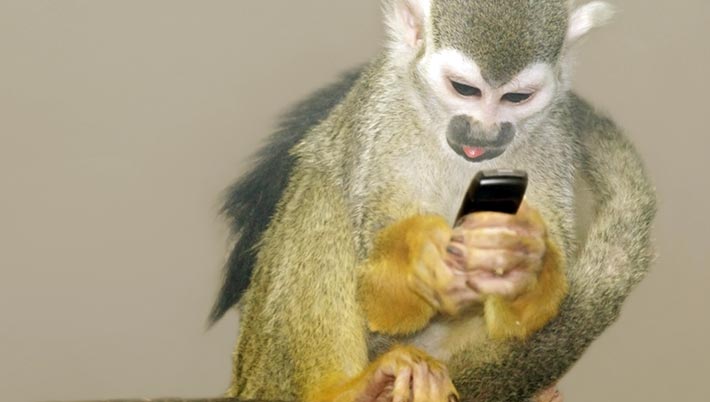Humans, we are told, take risks because it’s in our nature to expose ourselves to a certain level of danger in pursuit of a specific reward or outcome.
Scientists who study this “need” to take risks have recently examined risk-taking in primates to gain a better understanding of why humans are prepared to experience losses in order to experience the thrill of Grande Vegas wins.
Risk-Taking
Risk-taking behaviors in humans manifest in many of our day-to-day experiences including in the social, physical, recreational and social domains. These behaviors are sometimes influenced by environmental factors but also by genetic influences.
Younger people engage in more risk-taking behaviors than do older adults because, say researchers, the prefrontal cortex – the part of the brain associated with impulse control and decision-making -- is not fully developed until early adulthood. Even then, it continues to develop and refine its functions well into an individual’s mid-20s or even later.
In addition, some individuals have a higher need for sensations, more impulsivity and a higher tolerance for ambiguity. Peer pressure, cultural factors and social norms also play a part in influencing risk-taking behaviors while some people simply have overconfidence biases and optimism biases that lead them to overestimate potential rewards while underestimating risks.
Finally, people may engage in risk-taking behaviors to find excitement, pursue rewards cope with stress, assert autonomy or simply to alleviate boredom.
Monkeys
Researchers at John Hopkins University, led by neuroscientist Viet Stuphorn, are looking deeper into the question of risk-taking among humans by teaching rhesus monkeys to gamble. They are looking at “decision-making under risk” by examining the brains of gambling monkeys in the belief that, if risk-taking in monkeys can be understood, it will open the way for a better understanding of human risk-taking.
Stuphorn’s research has been going on for more than a decade. He says that the project has already uncovered the finding that a specific area of a monkey’s brain is associated with the tendency to take high risks – a discovery that may extend to the human brain as well.
The study has involved teaching the monkeys to understand probability and color schemes. After that, the monkey is given a computer screen which displays two square boxes of equal size. Inside the boxes are different colors and the monkeys soon learn that they can “earn” rewards based on the colors that they choose.
The monkeys are given 2 choices every round and they make their choice based on their eye movements. It quickly becomes apparent to the monkeys which colors will deliver the highest reward, a medium reward or a low reward.
Once the monkey gets bored, “They close their eyes and snore,” says Stuphorn, and the game ends. Over time, Stuphorn has noted that monkeys are inherent risk takers, preferring to gamble rather than settle for less.
The next part of the study involved the SEF, the supplementary eye field, which is part of the brain’s frontal cortex. Stuphorn and colleague Xiaomo Chen positioned tiny metal plates of the SEF region of the monkeys’ brains to inactivate the tissue.
They then repeated their experiment and noted that the monkeys became less likely to take riskier bets. According to Darby Proctor, a comparative psychologist at the Florida Institute of Technology who has headed similar studies, that is not surprising. “That's where we know that humans make their complex decisions. But I think it's very interesting that they are able to change the responses by knocking out some of those regions. That helps us really to refine where the biological basis for those decisions are.”
For Gamers
For gamblers, these studies point to the importance of gambling responsibly in a way that emphasizes gaming’s place as a form of entertainment. Responsible gambling encompasses a range of strategies that minimize risks while ensuring that gamers can enjoy gaming events as an adventure in fun and excitement.
There are a number of bodies involved in creating a safe space for casino aficionados including government regulators, gambling operators, advocacy groups, and public health agencies. But in the end, it all comes down to the individual’s ability to set limits so that the risks don’t become overwhelming.
To gamble safely:
- Become educated about the potential risks and consequences of playing real money games. Learn about the odds of winning, the potential for financial loss and telltale signs that you might be crossing a line from gambling entertainment to irresponsible gambling.
- Make sure that you set clear limits before you even open your casino account. Create boundaries beyond which you will not cross including a firm budget which you will not exceed. Never go beyond that budget because you might find yourself using money that’s set aside for household or other needed expenses. Figure out your entertainment budget and don’t go beyond that, regardless of whether you’re “sure” that the next big win is “just around the corner.” Utilize the casino’s self-exclusion program if needed to put a hold on your gambling activities. There are trained professionals at organizations like Gamblers Anonymous who are on call to help if needed. They are just a phone call away.
Researchers have a long way to go to learn more about how our brains are wired to search out risky behavior but plenty is known about how to play casino games safely.

